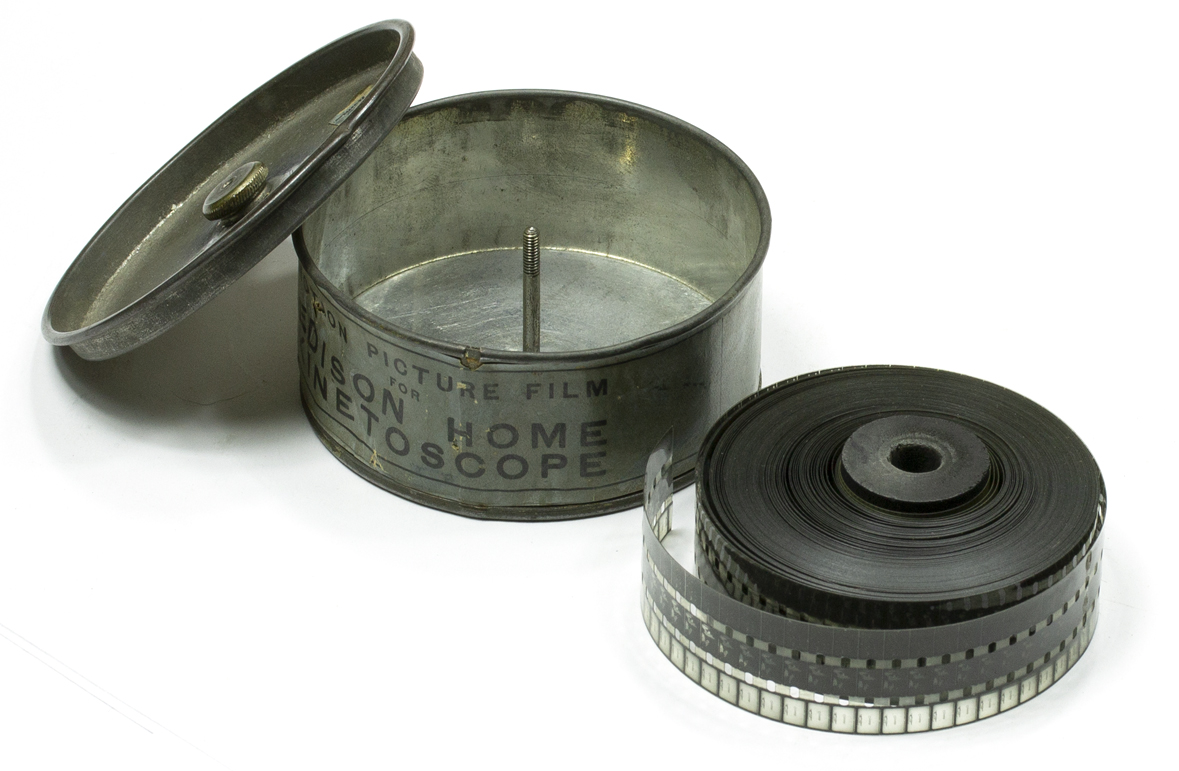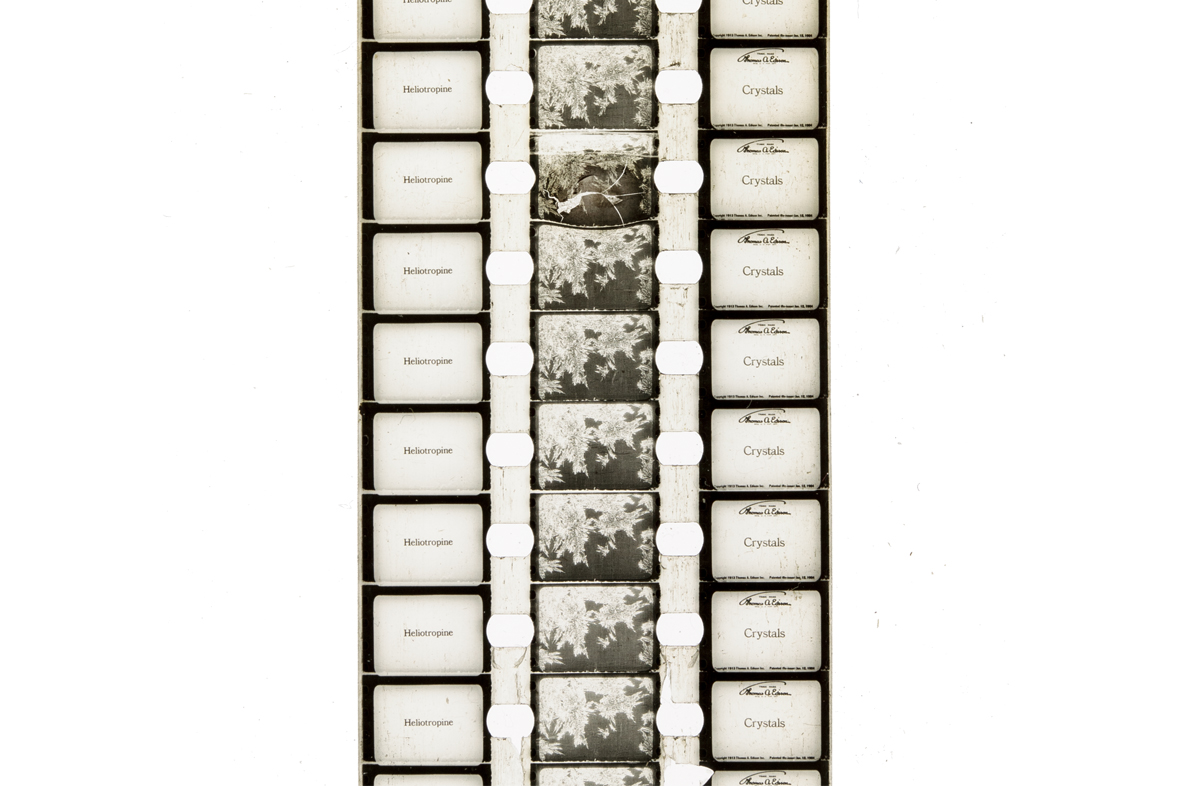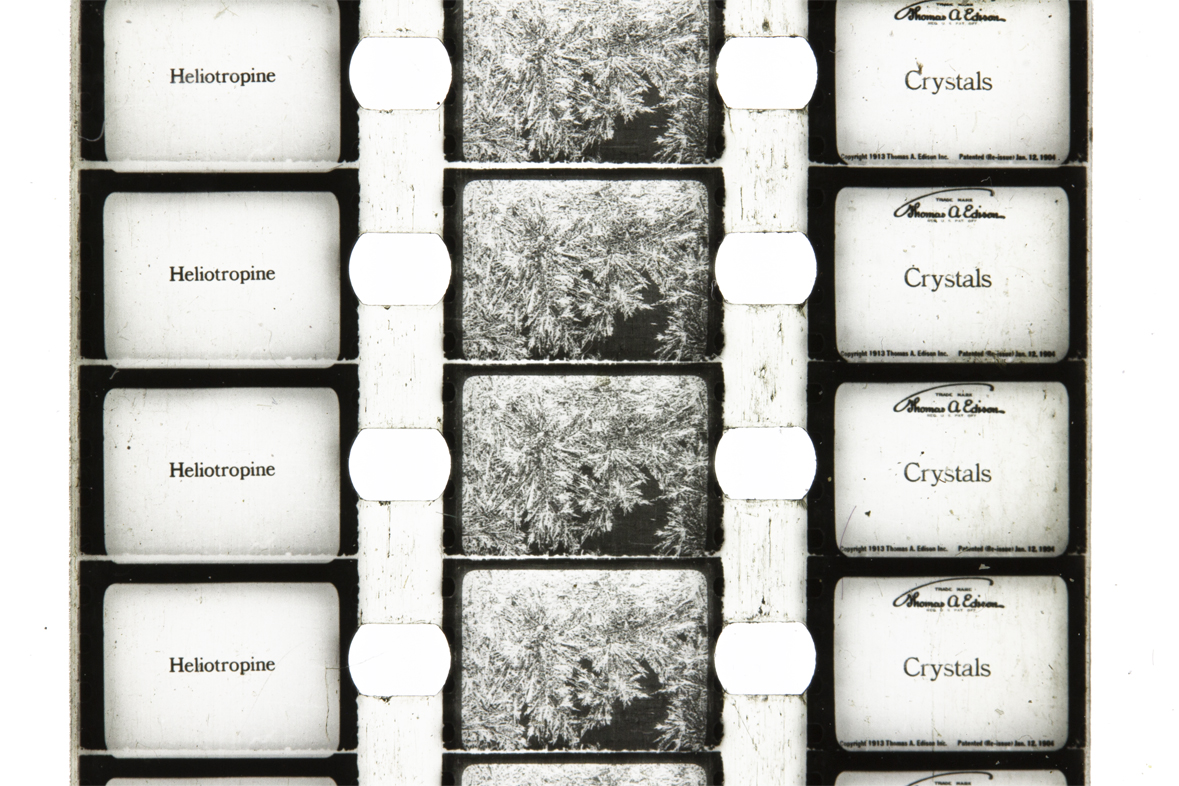Title: | Crystals |
Date: | c. 1912 |
Material: | Cellulose diacetate |
Dimensions: | 22 mm |
Company: | Thomas A. Edison Inc. |
Location: | Orange, New Jersey, USA |
Film for the Home Kinetoscope was cellulose acetate, much safer for home use than highly flammable cellulose nitrate. The films were 22 mm wide and contained three parallel strips of 4 × 6 mm frames. When the hand-cranked projector reached the end of the first row, the operator turned a knob to reposition the gate and cranked the film in the opposite direction. This was repeated for the third and last row. This arrangement meant that a relatively inexpensive strip of film could hold a 10 minute movie, at a time when commercial releases on 35 mm film lasted from 10 to 12 minutes. The movies were reductions of 35 mm Edison theatrical releases and educational films. They were available for rent by mail (pre-dating Netflix by 85 years) and were mailed and returned to the Edison Co. in a metal can. There was no camera for the format and no way for customers to make their own home movies.
The Home Kinetoscope was a commercial failure in itself and a distraction that may have contributed to the general failure of the Edison film business. The Edison Co. had left the movie business by 1918.


